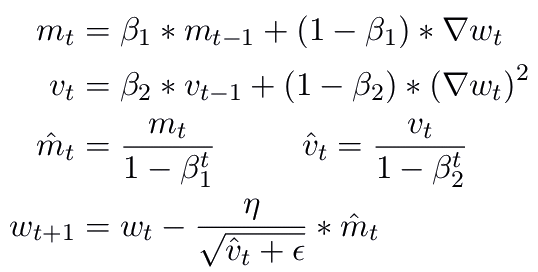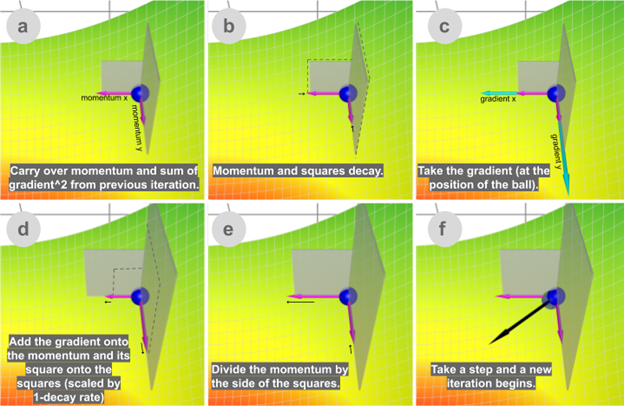
Download our e-book of Introduction To Python
Related Blog
Matplotlib - Subplot2grid() FunctionDiscuss Microsoft Cognitive ToolkitMatplotlib - Working with ImagesMatplotlib - PyLab moduleMatplotlib - Working With TextMatplotlib - Setting Ticks and Tick LabelsCNTK - Creating First Neural NetworkMatplotlib - MultiplotsMatplotlib - Quiver PlotPython - Chunks and Chinks View More
Top Discussion
How can I write Python code to change a date string from "mm/dd/yy hh: mm" format to "YYYY-MM-DD HH: mm" format? Which sorting technique is used by sort() and sorted() functions of python? How to use Enum in python? Can you please help me with this error? I was just selecting some random columns from the diabetes dataset of sklearn. Decision tree is a classification algo...How can it be applied to load diabetes dataset which has DV continuous Objects in Python are mutable or immutable? How can unclassified data in a dataset be effectively managed when utilizing a decision tree-based classification model in Python? How to leave/exit/deactivate a Python virtualenvironment Join Discussion
Top Courses
Webinars
Adam Optimizer: In-depth explanation

Neha Kumawat
4 years ago
In
my previous article “Optimizers in Machine Learning and Deep Learning.”
I gave a brief introduction about Adam optimizers. In this article, I will try
to give an in-depth explanation of the optimizer’s algorithm.
If
you didn’t read my previous articles. I recommend you to first go through my
previous articles on optimizers mentioned below and then come back to this
article for more better understanding:
Optimizers in Machine Learning and Deep Learning
Gradient descent Algorithm: In-Depth explanation
Adagrad and Adadelta optimizers
RMSprop: In-depth Explanation
So,
let’s start
Adam stands for Adaptive Moment Estimation, is another method that computes adaptive learning rates for each
parameter. In addition to storing an exponentially decaying average of past
squared gradients like Adadelta and RMSprop.
Adam also keeps an exponentially decaying average of past
gradients, similar to momentum.
Adam can be viewed as a combination of Adagrad and RMSprop,
(Adagrad) which works well on sparse gradients and (RMSProp) which works well
in online and nonstationary settings respectively.
Adam implements the exponential moving average of the gradients to scale the learning rate instead of a simple
average as in Adagrad. It keeps an exponentially decaying average of past
gradients.
Adam is computationally efficient and has very less memory
requirement.
Adam optimizer is one of the most popular and famous gradient
descent optimization algorithms.
Intuition behind Adam
We can simply say that, do
everything that RMSProp does to solve the denominator decay problem of AdaGrad.
In addition to that, use a cumulative history of gradients that how Adam
optimizers work.
The updating rule for Adam is shown below

If you have already gone through my previous article
on optimizers and especially RMSprop optimizer then you may notice that the
update rule for Adam optimizer is much similar to RMSProp optimizer, except
notations and help we also look at the cumulative history of gradients (m_t).
Note that the third step in the update rule above is used
for bias correction.
RMSProp implementation in Python
So, we can define Adam
function in python as shown below.
def adam():
w, b, eta, max_epochs = 1, 1, 0.01, 100,
mw, mb, vw, vb, eps, beta1, beta2 = 0, 0, 0, 0, 1e-8, 0.9, 0.99
for i in range(max_epochs):
dw, db = 0, 0
for x,y in data:
dw+= grad_w(w, b, x, y)
db+= grad_b(w, b, x, y)
mw = beta1 * mw + (1-beta1) * dw
mb = beta1 * mb + (1-beta1) * db
vw = beta2 * vw + (1-beta2) * dw**2
vb = beta2 * vb + (1-beta2) * db**2
mw = mw/(1-beta1**(i+1))
mb = mb/(1-beta1**(i+1))
vw = vw/(1-beta2**(i+1))
vb = vb/(1-beta2**(i+1))
w = w - eta * mw/np.sqrt(vw + eps)
b = b - eta * mb/np.sqrt(vb + eps)
print(error(w,b))Below
given is a step by step working of Adam optimizer.

Steps involved are:
a) Carry over momentum and
sum of gradient square from the previous iteration.
b) Take momentum and square decay.
c) Then, take gradient at the
position of the ball as shown in the figure above.
d) Next, add the gradient
onto the momentum and its square onto square (scaled by 1-decay)
e) Then divide the momentum
by the side of the square.
f) Finally, take a step and a
new iteration begins as shown in the figure.
Note: if you
want to watch live animation I recommend you to
visit this app.
It will provide you a very good visualization.
Note: We can say that Adam gets the speed from
momentum and the ability to adapt gradients in different directions from
RMSProp. The combination of these two makes it powerful and faster among all
the other optimizers.
I hope after reading this article, finally, you came to know about
what is Adam, how it works? and What’s the difference between Adam and other
optimizers algorithms and You also see how it is most important optimizer.
In the next articles, I will come with a detailed explanation of some other
type of optimizers. For more blogs/courses on data science, machine
learning, artificial intelligence and new technologies do visit us at InsideAIML.
Thanks for reading…
